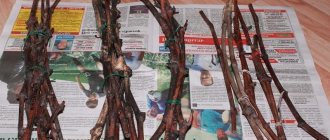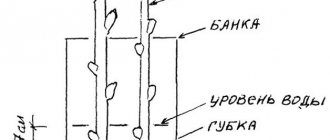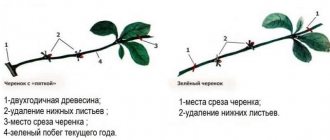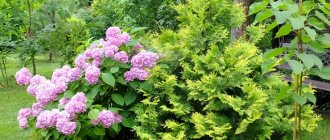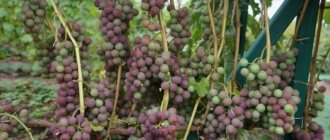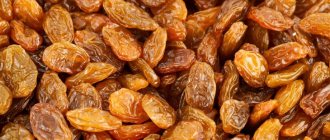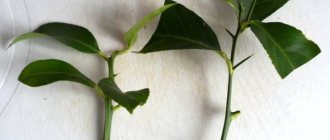Every gardener dreams of having a well-groomed vineyard. At the moment, grapes have many varieties that are suitable for growing in different areas. The grapes can grow both in areas with a short summer period and in warm areas. To select the right variety for a specific climate zone, it is necessary to propagate this berry by cuttings. This kind of work is quite responsible, but in the end the gardener will get the result he needs.
Pros of growing from cuttings
A cutting is a part of a stem with several buds. For propagation at home, lignified branches are taken from a mature vine. Another name for them is cuttings or chibuki.
Any gardener, even a beginner, can propagate grapes from cuttings. This method has many advantages:
- the possibility of obtaining a large number of seedlings;
- seedlings are easy to transport, send by mail and store;
- ease of treatment against pests and diseases;
- low cost of seedlings.
Lignified cuttings are planted in open ground (in autumn or spring), but at the end of winter or spring they are rooted at home.
Growing grapes from cuttings at home provides a good opportunity to obtain full-fledged seedlings in regions where covered viticulture is widely used (Urals, Siberia, Moscow region).
Advantages of growing from cuttings at home:
- the process of development and acceleration is controlled;
- absence of negative weather factors;
- takes up little space;
- a good leap in time, which will allow you to increase your planting bushes in the current season.
Basic methods of grape propagation
One of the time-tested ways to propagate a crop is to cover the vines with soil. If it is still green, then the procedure is carried out at the end of June, if it is already lignified, in the spring. Sprinkle so that the top remains above the surface of the ground. In the fall, each of the sprouts is separated from its neighbors, placed in markets and stored in a special room until spring. For northern regions, this option is practically unsuitable, since roots will form at the point of shoot growth, and such roots often die from frost.
Sprinkling the vine with soil has an original modified version, in which at the end of June a bag with a special soil mixture of soil and peat is attached to the base of the shoot. By autumn, roots have formed in this place and a full-fledged grape seedling can be used for its intended purpose. However, this option also has the same drawback - young roots will be sensitive to negative temperatures.
To obtain high-quality material in significant quantities, you can use the layering method:
- horizontal – obtaining seedlings for transplanting to a new location, a groove up to 20 cm deep;
- deep - replacement of old (mother) bushes, a groove with a hole in the place where the shoot is supposed to emerge, up to 50 cm deep.
In the cold northern regions, the most widespread method of propagating grapes is by cuttings. The material is harvested in the fall and stored in a box with damp sand to protect it from drying out. In March, they begin to germinate in glass jars, and after the first roots appear, they are planted in bags with soil. May is the time to plant young seedlings in a permanent place.
Preparation of material for planting
For germination in the winter-spring period, cuttings are selected from a mature (brown, crackling when bent, woody) annual vine. They are harvested when pruning grape bushes (approximate period is October, before the onset of the first frost). In non-covered areas, stems for propagation are pruned at the end of November and in winter - from the vine, without any symptoms of drying out or freezing.
Propagation material is best obtained from the healthiest and most productive bushes that have typical varietal characteristics. These are bushes with even branches, without defects or spots. The middle part of the shoots that have sprouted from the central buds of two-year-old branches is selected for cuttings.
The normal thickness of cuttings is considered to be from 0.5 to 1 centimeter (for a variety with a thin vine, this norm may be smaller). Fattening and thick stems have loose wood, so they are not suitable for propagation.
Reproduction by layering
Layerings are rooted lower shoots that are placed in a special way in the ground without being disconnected from the parent bush until the seedling matures. Depending on the age of the shoot and the nuances of laying layering grooves, the following methods are distinguished:
- dry;
- green;
- semi-green;
- horizontal;
- deep;
- Chinese;
- katavlak, etc.
The chronology of actions when propagating grapes by layering follows the following algorithm:
- Forming a groove 15 cm wide and up to 20 cm deep in the desired direction from the mother bush. This procedure should be carried out until buds appear on the vine.
- Fill the ditch ¾ full with a mixture of soil and humus.
- Laying the vine along the groove and pinning it to the ground using wire, slingshots and other devices to fix the position.
- Backfill the laid vine with soil mixture and thoroughly water it with water with the addition of manganese.
- Covering the layering with film until the first leaves appear above the ground. This technique allows you to create an optimal microclimate.
- Regular watering and tying young shoots to pegs made of wood or metal.
- Pinching young shoots at the end of summer will cause them to ripen.
- With the onset of autumn, the cuttings are dug up, divided into parts, the roots of each seedling are dipped in a clay solution and sent for storage.
Did you know that no more than two layerings are formed from one bush, and layering can be done in the middle of summer if the leaves are removed from the shoot before planting it in a trench.
Dimensions and cutting of cuttings
The length of the cutting is measured not in centimeters, but in the number of eyes (buds) located on it.
The most commonly used are two-eyed and three-eyed, although one-eyed and four-eyed are also suitable. When cutting branches, the stepsons, tendrils and remaining foliage are cut off. It happens that long vines (50-100-170 cm) are stored in winter, and cutting is carried out before rooting.
The upper cut is made straight, the height above the upper bud is 2-4 centimeters. The lower cut is made obliquely under the lower bud, and the indentation should be small. At first, novice gardeners cannot determine where the top part is and where the bottom part is. It is by the method of cutting that this issue can be resolved.
Chubuki are tied into bundles and tied in two places. Tags indicating the name of the variety are attached to the tied bunches. After this, the bundles should be stored for several months. Before this, they are processed.
Rooting chibouks in soil or sawdust
In a large planting box (or greenhouse), chibouks with root rudiments are planted according to the same principle:
- install carefully;
- covered with filler;
- watered;
- fill to the top.
The distance between the stems must be at least 10 cm, otherwise they will become entangled with roots and it will be impossible to plant them without damage.
Preparing cuttings for storage
Chubuki needs:
- soak in water for 12 hours, laying them horizontally so that a small layer of water completely covers them;
- to disinfect: dip for 15 seconds in a solution of copper sulfate (400 grams per 10 liters of water) or iron sulfate (300 grams per 10 liters of water). After treatment with iron sulfate, the vine will turn black - this is a normal reaction;
- dry on fabric or paper for several hours;
- wax the sections (tips). Dip in paraffin, which is melted in a water bath and slightly cooled (not all gardeners use this method);
- Before storing, wrap in cling film or plastic bag.
If all these steps are followed, the cuttings will be well preserved.
Watch the video! Preparation and storage of grape cuttings
Options for germination of cuttings
A couple of weeks before planting in the ground for germination, in early February, you need to take out the cuttings and check their freshness by pressing on the cross section with pruning shears. If a few droplets of water appear, it means that the cutting is well preserved; no drops appear - the branch is dry, moisture oozes from the branch without pressing - the cutting is rotten. Make a fresh cross-section and pay attention to its color: it should be light green, there should be no black spots.
In order for grape propagation to be successful, you need to soak in warm water those cuttings that were best preserved over the winter. Soaking lasts two days with daily water changes, after which it is recommended to place the branches in a root formation stimulator for a day.
Before propagating grapes from cuttings, you need to germinate them at home in plastic glasses or bottles.
In order for grape propagation to be successful, you need to soak in warm water those cuttings that were best preserved over the winter.
Option 1. Sprouting in glasses:
- prepare large plastic glasses by making three holes in the bottom with an awl;
- pour soil mixed with leaf humus into the bottom of the glasses in a 2 cm layer;
- Place a smaller cup without a bottom on top of the soil, filling the gap between the walls of the cups with soil, compact and water the soil;
- pour washed river sand into the inner glass, pour it over and remove the glass;
- in the very center of the sand, make a 4 cm indentation with a stick, insert the cutting there and pour in the sand;
- pour sand on top, cover the glass with a plastic bottle without a bottom and without a lid.
Every day or every two days you will need to water the seedlings with warm water. And when the roots are visible near the walls of the glass, and 4 leaves grow on the branch, the bottle can be removed.
Option 2. Germination in a bottle:
- make several holes in the bottom of a plastic bottle with a cut off neck;
- add a drainage layer;
- pour 7 tablespoons of soil mixture over the drainage;
- insert the cutting into the soil mixture at an angle so that the top soil or eye is at the level of the top of the bottle;
- pour steamed old sawdust on top;
- cover the cutting with a plastic cup.
The cup can be removed when the shoot no longer fits in it
Place the bottle with the stem facing away from the window. The cup can be removed when the shoot no longer fits in it. You should water from below through a tray, pour a little water into it and place a bottle with a seedling there for 15 minutes.
Preserving cuttings before planting
The ideal storage conditions are:
- air humidity – from 80 to 95%;
- temperature - from 1 to 4 degrees (but not higher than +8).
Planting material should be stored in the refrigerator or basement, as well as outside - in a trench or in a snowdrift.
Storage locations for cuttings:
- Snowdrift. Ideal storage location for snowy areas. It must be stored in loose snow (optimal humidity and temperature) at a depth of at least 50 centimeters. Before the snow falls, the cut vine is wrapped in damp burlap and kept on the ground in the garden. When the first frost appears, it is transferred to the basement or room with a low positive temperature. Chubuki are placed in a snowdrift open or packaged (in cut-off plastic bottles or sugar bags);
- Trench. The depth of the trench is 50 - 100 centimeters. The bottom of the trench is covered with a small layer of sand, on which bunches of vines are placed vertically. After this, the trench is filled with sand and earth and covered with boards, slate or film. Often the vine is packed in a sugar bag and buried half a meter deep. The disadvantage of this method is that it is very difficult to get chibouks in the spring;
- In the cellar or refrigerator. The seedlings are placed in a sugar bag or plastic bag. The packaging is placed in the refrigerator (in the vegetable department) or lowered into the cellar. First, the vine (bottom cut) is wrapped in moistened newspaper. For moisture and ventilation, the newspaper is opened at the beginning of January. The bundles are placed in two cut bottles, and the joint is wrapped with tape.
Storage of planting material
Before planting grape stems, the gardener must properly preserve them until spring. You can store planting material in a home refrigerator or cellar at a temperature of +1 °C.
Before sending for storage, the chubuki should be properly prepared:
Treat the cuttings with chemicals that destroy spores of various diseases. You can use Quinozol or copper sulfate. You need to soak the planting material in these solutions for several hours.- Soak the jugs in water for a couple of days. They must be saturated with water so as not to dry out during storage.
- Wipe with a cloth to remove excess moisture.
- Place the cuttings in a plastic bag so that only the tops remain outside. The package should be tied tightly to the shanks. It is recommended to mark the date of bookmarking on the package.
Experienced winegrowers place the chubuks in bags, having previously added pine and spruce sawdust. The latter are pre-scalded with boiling water.
The resin contained in sawdust can protect planting material from mold. During the winter, the sawdust will need to be changed several times. During the replacement, it will be possible to assess the condition of the pipes. Blackened specimens will need to be disposed of. If mold is found, you can get rid of it using a solution of potassium permanganate.
Grape pipes must be kept in cold conditions with air humidity close to 100%. Maximum storage temperature is 6 °C.
Treatment before rooting
Before rooting, it is necessary to check the condition of the materials for planting: good ones - prepare for germination, bad ones - throw them away. If traces of mold appear on the seedlings, they must be treated with a solution of potassium permanganate.
Security check:
- The bark is examined: healthy - without blackening and wrinkles;
- A transverse cut is made in the stem. All wood and cambium under the bark should have a light green tint. Brown, white or black tint is an indicator of death;
- When pressing on the cut, a little moisture should be released. If there is no or a lot of it, then the rooting process will be low.
Soak
After checking for grape diseases, the chubuks are placed in a container with water for a period of 12 hours to 2 days. It is necessary to soak both overdried and normal chibouks. The room temperature is approximately +20 degrees. The water is changed every 12 hours. There are times when honey is added to water (1 tablespoon per 10 liters of water).
Trimming
A long vine is cut into chibouks with 2-3 buds. If pruning was done in the fall, then the lower cuts are renewed before rooting. They are made under the lowest nodes - on a wedge or obliquely. The work is carried out with a sharp knife to avoid squeezing the tissue. The cut branches are immediately placed in a container with water at the bottom.
Furrowing
The best place for root formation is the place where callus flows onto the wound surfaces. This phenomenon can be triggered manually. The lower part of the cuttings is scratched with a knife, making several longitudinal grooves. It is necessary to go deep to the wood or cambium. The length of the scratches is approximately 3-6 centimeters.
Processing by simulator
The lower part of the cuttings is soaked in one of the liquid root formation stimulants (solution of Zircon, Heteroauxin, Potassium Humate - according to the instructions) or treated with Kornevin.
After processing, the chibuki must be placed in 3–4 centimeters of water until the time for planting approaches.
After two weeks, the top bud will begin to bloom, and the seedling will begin to absorb water, so it needs to be topped up.
Features of germination in winter
For proper storage and germination of grape cuttings at home, the developmental features of this plant are taken into account. Like other plants, its annual cycle includes phases of vegetation and dormancy. In the vegetative stage, grapes propagate exclusively in spring by layering. When dormancy sets in, propagation is carried out by cuttings. Dormancy for this crop begins at the end of November and continues until the third decade of January. At this time, even under favorable conditions, the kidneys are in a dormant state.
In the last days of January, forced peace sets in. At this time, the vine is already ready to awaken, but the temperature is too low and does not allow the buds to bloom. Therefore, this moment is the most suitable to begin rooting the chibouks.
Germination of cuttings in winter includes several activities:
- Cuttings are taken in late autumn after the vine enters a dormant state. For this purpose, mature annual shoots with a diameter of 8 mm or more are used. Cuttings are cut from 10 to 15 cm long with two eyes on each. The blanks are left in water for a day to soak. Then they are treated in a weak solution of potassium permanganate, tied in bunches and sent for storage.
- Bundles of chibouks are stored in a room with stable conditions. The room temperature should be kept below +15 degrees. Otherwise, the cuttings will soon begin to take root on their own. It is best to keep them in the refrigerator, basement or cellar, placing them in a box with sand.
- Preparations for planting are carried out after wintering. The cuttings are inspected and damaged ones are discarded. Germination usually takes from 3 weeks to 1.5 months. Based on these indicators, the start date for preparation is chosen in order to obtain grape cuttings for germination.
- Germination is carried out using different methods. In general, they bring the same result.
Preparation
Before germination, the planting material prepared in the fall is removed from the cellar or other storage and inspected. All cuttings with dark spots and traces of mold are thrown away. Stems with black or darkened wood cannot be rooted.
Disinfection
To improve the result, the material prepared for rooting is disinfected. To do this, dilute potassium permanganate in a container with water to obtain a rich pink solution. The rods are placed in it for half an hour, then removed and washed with running water.
Slicing
For short cuttings, this operation consists only of updating the cut. If the vine was stored long, it is cut into pieces 10-15 cm in size, so that each has 2-3 buds. The cut from above is made so that it extends 2 cm above the last eye. It is made at an angle, pointing the sharp end towards the kidney. A straight cut is made from below, with an interval of 1 cm from the bud. The eyes from below are all removed so that the plant does not waste energy on their development.
Soaking
The cut cuttings are placed in settled water for two days. To do this, pour it into a wide basin and place the pieces so that they are completely covered with liquid. It is allowed to soak the chibuki in a bucket, lowering them into the liquid so that the lower third is covered.
Important! If possible, use rainwater or melted snow for soaking.
Waxing
This procedure is not necessary, but is recommended to speed up the development of the root system. Melt the paraffin and dip the upper end of the cutting into it. Paraffinization will not allow the buds to develop. This will encourage the cutting to devote all its energy to growing roots.
Furrowing
In the lower part of the segment, make superficial cuts on the bark with a sharp knife, in which roots will appear in the future. Scratches are made in the longitudinal direction along the bark. This increases the number of roots formed.
Soaking to stimulate growth
To do this, use special preparations sold in gardening stores. They are designed to stimulate growth. They are diluted in water according to the instructions and used for soaking planting material. As a result of soaking, roots appear faster. But if there is no such drug, the procedure is not necessary.
Rooting of seedlings
After 10 days, after the first bud has blossomed, the first roots will appear. When the root system develops, the chibuki are planted in a container with a special substrate. A special drainage is placed at the bottom of the container, and then a grape substrate. The seedling is filled to the top so that the top bud remains on the surface. After rooting, the seedling is watered and placed on the sunny side for productive growth. For survival, some gardeners feed young grapes. Grapes are grown from cuttings only with the rooting process.
Watch the video! How to root a grape cutting
How to germinate grape stems at home
To germinate roots in grape seedlings after treatment with stimulants, the following actions are necessary:
- Place the cuttings in a transparent container so that the process of root formation can be seen.
- Pour water to the bottom of the container (about 4 cm) and add as the level drops. The vessel must be of sufficient height so that the second eyes on the stems from which the shoots will grow are higher than its edge.
- Add “Heteroauxin” to the first rooting liquid.
- Then the water in the vessel with the jugs must be changed once every 7 days, without adding any more stimulant (you can add activated carbon powder to prevent the water from acidifying).
- Place the vessel with the chibouks on a warm windowsill above the radiator to stimulate rapid root formation.
- For the upper ends of the cuttings, it is necessary to provide cool air to slow down the development of the green parts.
- After the roots have grown by 0.5–2 cm, the cuttings are ready to be planted.
As a rule, buds may first bloom on stems placed in a container for germination, and then roots will appear. Between these events it can take from 2-3 weeks to 1-2 months. It depends on the grape variety and the quality of the seedlings. When the first roots appear on the stems, they can be planted in the soil mixture.
Picking grapes
Kilching is the process of creating a temperature difference in the lower and upper parts of the chibuka: below is warm, above is cool. Kilching increases the chance of rooting.
When sprouting, the problem arises of bud sprouting earlier than root growth. There are times when greenery appears on a seedling and, before it has time to take root, it becomes exhausted and dies. It is kilching that can solve this problem. At home, in practice, it is carried out in the following ways:
- Containers with cuttings are placed on a radiator or in a special keel for bottom heating (temperature from +20 to +27 degrees). The temperature in the upper part should be from +5 to +10 degrees. To create such conditions, the culver must be placed in a cool room. In the absence of a piercer, the containers are kept on the battery, while a protective curtain-screen is constructed between the warm air of the room and the cool window;
- High productivity is achieved by upside down kilching. The moistened material is placed at the top, which is covered with a heated lid. This method prevents the bud from blooming before the root system.
How to root a vine in spring
Growing grapevines in the spring should begin with their rooting. There are different methods, the choice depends on the number of cuttings, available space, dishes, etc. The rooting process begins in February (its last ten days) or in the first days of March. On the eve of how to properly plant grape stems and stimulate the formation of roots, they are prepared. The future seedlings are soaked for 24 hours in settled water. You can add rootvin, humate, epin, zircon, honey or aloe juice to it. Then the sections are disinfected, refreshed, and long cuttings are divided into shorter ones.
Rooting in a water bottle
The easiest way to root grape stems at home is by placing them in bottles with water. The plastic bottle is cut off; cotton wool, gauze or a small layer of sawdust should be placed on the bottom. Pour some water in a 3-4 cm layer. The top edge of the liquid should reach the first eye on the branch. Several longitudinal scratches are made on the bottom of the cutting to stimulate rooting.
A bottle of water can be placed on a radiator or heated platform. The upper part of the seedlings should be cold and the lower part warm. This will speed up the formation of roots and slow down the formation of leaves. If two shoots appear on a branch, the strongest one is taken away. It draws too much strength from the cutting and slows down the process of root formation. The water level during the rooting process must be constantly monitored and added as needed. Sometimes activated carbon and several crystals of potassium permanganate are added to the water in the bottle so that the grape stems in ordinary water do not rot.
Rooting cuttings on a cabinet
It is easy to grow grapes from chibouks by rooting them on a cabinet. This method is suitable for those who have a lot of vines, but there is nowhere in the house to put pots and bottles. Preliminary preparation of grape stems is carried out in the same way as in the previous case (disinfection, soaking, drying). The lower part of each cutting is wrapped with a damp cloth and film. Place all the branches in a pile on the cabinet. It is advisable that their tips be turned towards the window. Check and moisten the cloths from time to time.
To make the rooting process even more successful, you can use peat tablets instead of wet cloths. They are soaked in water, twigs are stuck in, wrapped in film and placed on a cabinet. After this you can forget about the vine. When they start planting grape stems in the ground, they don’t even take them out of the tablets.
Rooting in soil and substrate
How else is it possible to grow grapes from chibouks? This is done by rooting the vine in bags of soil. You can first put the cuttings in water for a week so that the first roots appear. After this, they are transferred to bags or other containers with earth. The soil for rooting grape stems is prepared with the following composition:
- Sod or garden type soil 1 tsp.
- Sand – 1 hour.
- Humus – 1 hour.
Mix all the ingredients and pour them into a plastic bag or pots, stick a cutting into it and pour some water on it. Rooting lasts 4-5 weeks, its success can be judged by the formation of shoots and leaves. If we grow varietal grapes from chibouks in this way, they do not need to be freed from the ground when transferred to open ground. The roots are not damaged and the planting result is better than with other methods.
You can use sawdust, special gel or moss as a substrate. The sawdust is pre-steamed with boiling water; you can pour boiled water with potassium permanganate over it. Planting such grape stems in open ground begins after 4-6 weeks, when the root system is well formed. They are pulled out of the substrate, inspected, unsuitable ones are discarded, and transferred to prepared pits.
Planting seedlings in school
A shkolka is a pre-prepared area of soil where grape seedlings are planted. This should be an area well lit by the sun. Boarding at school is carried out as follows:
- In the spring, the soil is dug up to a depth of 40 centimeters;
- One bucket of humus, two of sand and a scoop of wood ash are added per square meter of land;
- The soil is dug up again;
- Make small mounds in which the seedlings will be planted, after waxing the buds.
Planting on the site
Is it possible to plant grapes with chibouks on a garden plot without preparing it first? Of course not. The holes need to be made in about three weeks. Some gardeners prepare them in the fall. The planting site should be bright and warm, preferably on the south side of a hill, building or fence. Also, there should be no drafts in this place.
Pit preparation
A hole is dug with a diameter of 50-70 cm and a depth of about 80 cm. Groundwater in the area should not be higher than 1-1.5 m from the ground surface. To properly plant grapes with rooted shanks, the bottom of the hole is covered with drainage made of fine crushed stone, pebbles or coarse sand. Then soil, humus and another layer of soil are poured. You can simply mix the soil with fertilizers. But it’s better to sprinkle a little soil on top so that the concentrated organic matter does not burn the roots. The composition of fertilizers for one hole in which rooted grapevines need to be planted in the spring can be as follows:
- Manure 20 kg or peat – 30 kg
- Superphosphate – 100-300 g
- Potassium fertilizer – 150 g
- Potassium chloride – 30-50 g
- Wood ash – 3-5 kg
If the soil is poor, the amount of manure can be increased to three or four buckets. After the soil in the hole is ready, a support (wooden stick or reinforcement) is placed there. You can equip the cut with a trellis next to the planting. The distance between two holes should be 1-1.5 m, and between the grape rows - 2-2.5 m. Planting density largely depends on the variety, size and growth rate of the bushes.
Planting seedlings
When to plant grapevines in spring? When determining the timing, you need to focus on the weather and climate characteristics in the region. In order for the vine to take root and not freeze, the air temperature during the day and at night must be at least 15°C, and the soil temperature must be at least 10°C. The optimal time for planting in temperate latitudes is May or early June. You can pre-harden the cuttings at home. Pots or bottles with vines are first placed on the balcony or veranda for a couple of hours. Gradually the time is increased until the time comes to transfer the seedlings to the site, into open ground.
How to properly plant grapevines in spring? Before planting, the hole is watered abundantly. One bush requires 2-3 buckets of water. Then the seedlings are carefully pulled out of the water or substrate. If the vine branches were rooted in peat tablets or soil, replant them together. The chibouks are stuck into the ground at a slight angle, about 30-40°, with their tops pointing south. You can plant 2-3 pieces in one hole, then remove those that have not taken root.
After planting, carefully sprinkle the seedlings with soil so that one bud remains on the surface. Make a small hill around the seedlings and water again. When the soil settles, it is mulched with humus or peat. Mulch will retain moisture and nourish young cuttings. After planting grapes with stems in the spring, it is advisable to cover them with a cut plastic bottle or film. This will protect the vine from late frost. Proper planting of grape stems will make its cultivation successful; most seedlings will take root, turn into lush bushes and produce a bountiful harvest.
Growing grape seedlings in spring
In spring, it is easier to grow grapes from seedlings, but not everyone will be able to do this due to weather conditions. When growing, a special technique is followed:
- Woody and healthy shoots are cut off. They should be smooth and have swelling buds. Ready cuts are infused in water;
- The shoots are cut and distributed into chibouks with 2-3 buds. The lower cuts are made oblique;
- Each chubuk is planted in a jar or glass. Cultivation must be carried out in a warm, dark place until the seedling begins to develop its root system and take root;
- This growing of seedlings occurs all summer, and in the fall they are sent for preservation;
- Next spring, planting is done in a temporary place, and in the fall - in a permanent place.
Planting sprouted chibouks in pots, glasses or boxes
When root primordia of 1-5 mm appear on the cuttings, it is time to plant the vines in a solid substrate.
With the best of intentions, inexperienced summer residents make a common mistake: they use too nutritious soil to produce seedlings and germinate cuttings.
It should be the other way around: in search of “food”, the roots grow rapidly due to internal reserves.
At this stage, it is not recommended to feed the cuttings - the roots will grow poorly, there is already enough nutrition.
The following substrate is quite suitable for rooting:
- 1 part compost;
- 1 part of ordinary soil (preferably from the place where the seedling will grow);
- 2 parts sand.
For root formation, you can add a little wood ash - it contains many useful microelements.
For rooting chibouks, it is better to use separate containers in order to subsequently transfer the seedlings to a permanent place using a non-traumatic method - with a lump of earth.
It is best to use peat pots - the seedling is sent to the vineyard along with a peat container, which will quickly soak in the ground and serve as fertilizer. To germinate grape cuttings, you need to take a container with a volume of 1.0-1.5 liters.
The container (if it is not peat pots) should be disinfected before planting the chibouks - douse it with boiling water or rinse it with a solution of potassium permanganate.
- The dishes are filled 1/3 with substrate.
- Carefully install the cutting, add soil to half the container.
- Water well to allow the soil to settle.
- Fill the container with soil to the remaining height (1 cm below the rim).
- All pots can be placed in a box and covered with film - you will get a greenhouse for seedlings.
Practice shows that the seedling is ready to be “relocated” to a permanent place when the green shoot reaches a length of 12-15 cm. By this time the roots will have grown 5-7 cm. It is impossible to notice this in ordinary dishes. Using peat pots allows you to see that at some point the roots will begin to break through the walls of the pot.
